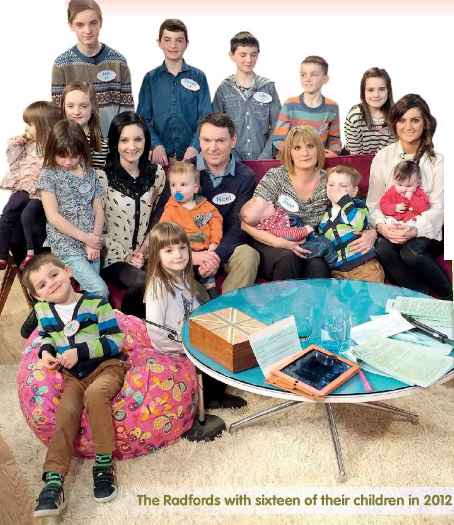Nonfiction Reading Test
Koko
Directions: Read the following passage and answer the questions that follow. Refer to the text to check your answers when appropriate.
Did you know that humans aren't the only species that use language? Bees communicate by dancing. Whales talk to each other by singing. And some apes talk to humans by using American Sign Language.
Meet Koko: a female gorilla born at the San Francisco Zoo on July 4th, 1971. Koko learned sign language from her trainer, Dr. Penny Patterson. Patterson began teaching sign language to Koko in 1972, when Koko was one year old. Koko must have been a good student, because two years later she moved onto the Stanford University campus with Dr. Patterson. Koko continued to learn on the campus until 1976. That's when she began living full-time with Patterson's group, the Gorilla Foundation. Patterson and Koko's relationship has blossomed ever since.
Dr. Patterson says that Koko has mastered sign language. She says that Koko knows over 1,000 words, and that Koko makes up new words. For example, Koko didn't know the sign for ring, so
she signed the words finger and bracelet. Dr. Patterson thinks that this shows meaningful and constructive use of language.
Not everyone agrees with Dr. Patterson. Some argue that apes like Koko do not understand the meaning of what they are doing. Skeptics say that these apes are just performing complex tricks. For example, if Koko points to an apple and signs red or apple, Dr. Patterson will give her an apple. They argue that Koko does not really know what the sign apple means. She only knows that that if she makes the right motion, one which Dr. Patterson has shown her, then she gets an apple. The debate is unresolved, but one thing is for certain: Koko is an extraordinary ape.
Sign language isn't the only unusual thing about Koko. She's also been a pet-owner. In 1983, at the age of 12, researchers said that Koko asked for a cat for Christmas. They gave Koko a stuffed cat. Koko was not happy. She did not play with it, and she continued to sign sad. So for her birthday in 1984, they let her pick a cat out of an abandoned liter. Koko picked a gray cat and named him "All Ball." Dr. Patterson said that Koko loved and nurtured All Ball as though he were a baby gorilla. Sadly, All Ball got out of Koko's cage and was hit by a car. Patterson reported that Koko signed "Bad, sad, bad" and "Frown, cry, frown, sad" when she broke the news to her.
It seems like Patterson and Koko have a good relationship, but not everyone agrees with it. Some critics believe that Patterson is humanizing the ape. They believe that apes should be left in the most natural state possible. Even Dr. Patterson struggles with these feelings. When asked if her findings could be duplicated by another group of scientists, she said, "We don't think that it would be ethical to do again." She went on to argue that animals should not be kept in such unnatural circumstances. Nonetheless, Koko lives in her foundation today.
As for the future, Dr. Patterson and the Gorilla Foundation would love to get Koko to an ape preserve in Maui, but they are having trouble securing the land. So unless you have a few million dollars to spare, Koko's going to be spending her time in Woodland, California with Dr. Patterson. Koko probably doesn't mind that. If she moved to Hawaii, she'd have to give up her Facebook page and Twitter feed, and she's got like 50 thousand "likes." Some may deny that she knows sign language, but nobody says that she doesn't know social networking.
1. Which best expresses the main idea of this article?
a. Bees, whales, and apes like Koko all use language to communicate. b. Koko uses sign language but some think it's just a trick.
c. It is natural for gorillas and house cats to live together.
d. If you want a lot of "likes" on Facebook, get a talking gorilla.
2. Which best describes how the second paragraph is organized?
a. Chronological order b. Cause and effect c. Compare and contrast d. Problem and solution
3. Which best expresses the author's purpose in writing the second paragraph? a. The author is describing the environment in which Koko lives.
b. The author is informing readers how Dr. Patterson developed her skills. c. The author is persuading readers that Koko should be freed.
d. The author is telling readers about Koko and Dr. Patterson's background.
4. Which happened last?
a. Koko got a stuffed cat for Christmas.
b. Koko lost All Ball.
c. Koko began living with the Gorilla Foundation.
d. Dr. Patterson began teaching Koko to sign.
5. Which statement would the author most likely agree with?
a. Koko has mastered sign language without a doubt.
b. Everybody likes how Dr. Patterson has raised Koko.
c. Koko doesn't really know sign language.
d. Some people are troubled by how Koko was raised.
6. Which best defines the word duplicated as it is used in the sixth paragraph? a. To dispute a fact or disagree with someone b. To lie to someone or to fool them c. To copy or recreate something d. To be disproven through debate
7. Which event happened first?
a. Koko moved onto the Stanford University campus.
b. Koko picked All Ball out for her birthday.
c. Koko began living with the Gorilla Foundation.
d. Koko got a stuffed cat for Christmas.
8. Which best describes the main idea of the sixth paragraph?
a. Dr. Patterson has treated Koko very cruelly.
b. Dr. Patterson and Koko have a beautiful, pure, and unconflicted relationship. c. Some people think that Koko should not have been treated like a human. d. Some people are working very hard to prove that Dr. Patterson is wrong.
9. Which statement would the author most likely disagree with?
a. Dr. Patterson has worked hard to teach Koko sign language.
b. Some people think that Koko only signs to get food.
c. The Gorilla Foundation would like to move Koko to an ape preserve.
d. Dr. Patterson has no regrets about working with Koko.
10. If a book were being written about Koko and All Ball, which title would best summarize their story? a. Long Wanted, Short Lived: A Tale of Strong Loves Lost
b. Happy Ending: The Gorilla Who Got What She Wanted
c. A Tale of Two Kitties: A Stuffed Cat Versus a Real One
d. Plushy Love: How A Gorilla Fell in Love with a Stuffed Cat
Long-Response Questions
1. Does Koko really understand sign language? Support your position with quotes from the text. Explain your quotes clearly. Argue your point thoroughly.
2. What lesson can readers learn from this text? Use evidence from the text to support your position. Explain what your evidence shows.
3. Make an inference. Describe how Dr. Patterson feels about her relationship with Koko. Use evidence from the text to support your response. Explain your evidence clearly.









là
lên google
dịch ạ
tk cho nấm nhoa
Dịch : Đọc qua đề thật nhanh để kiểm tra xem những ý tưởng của bạn
k mình nha !